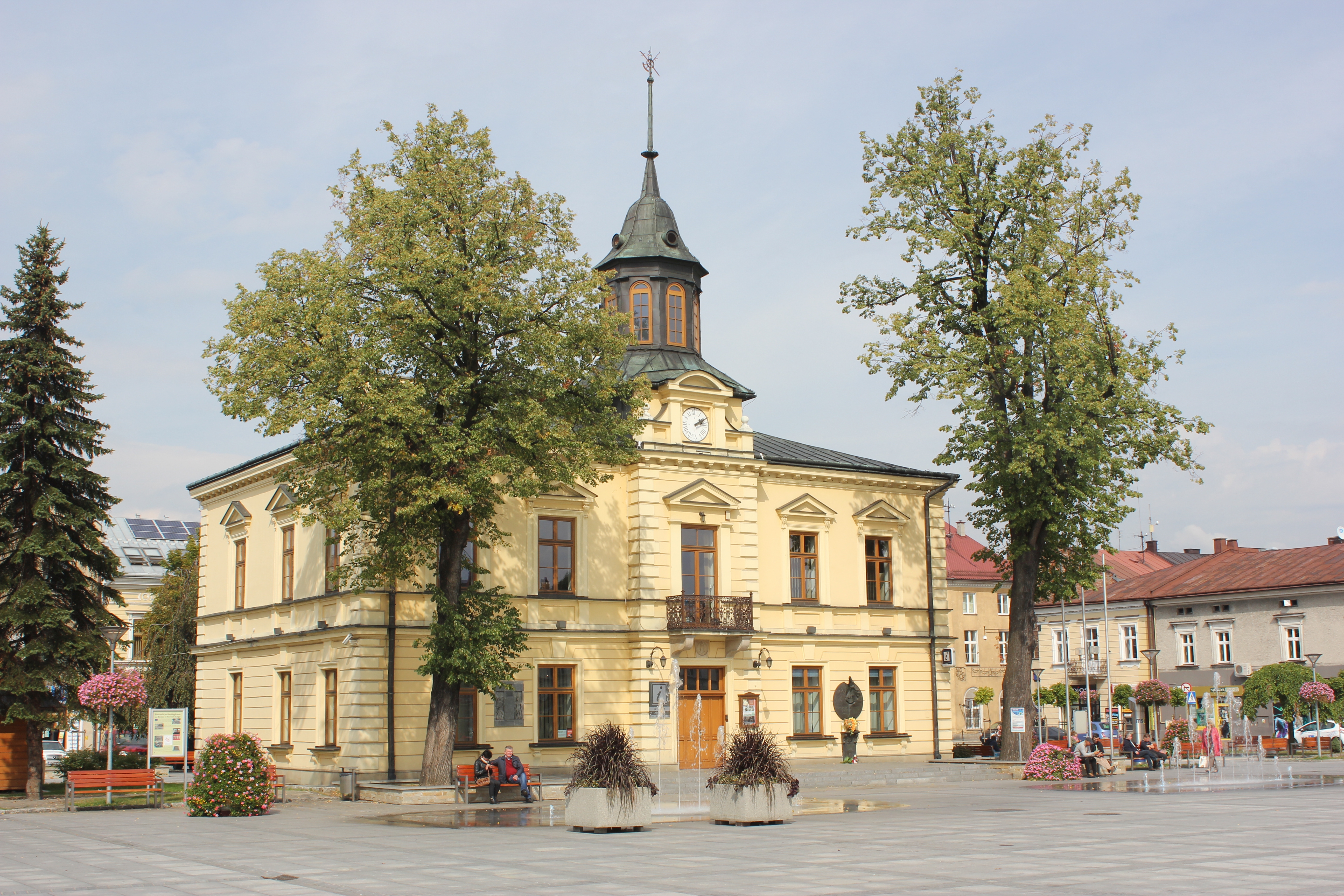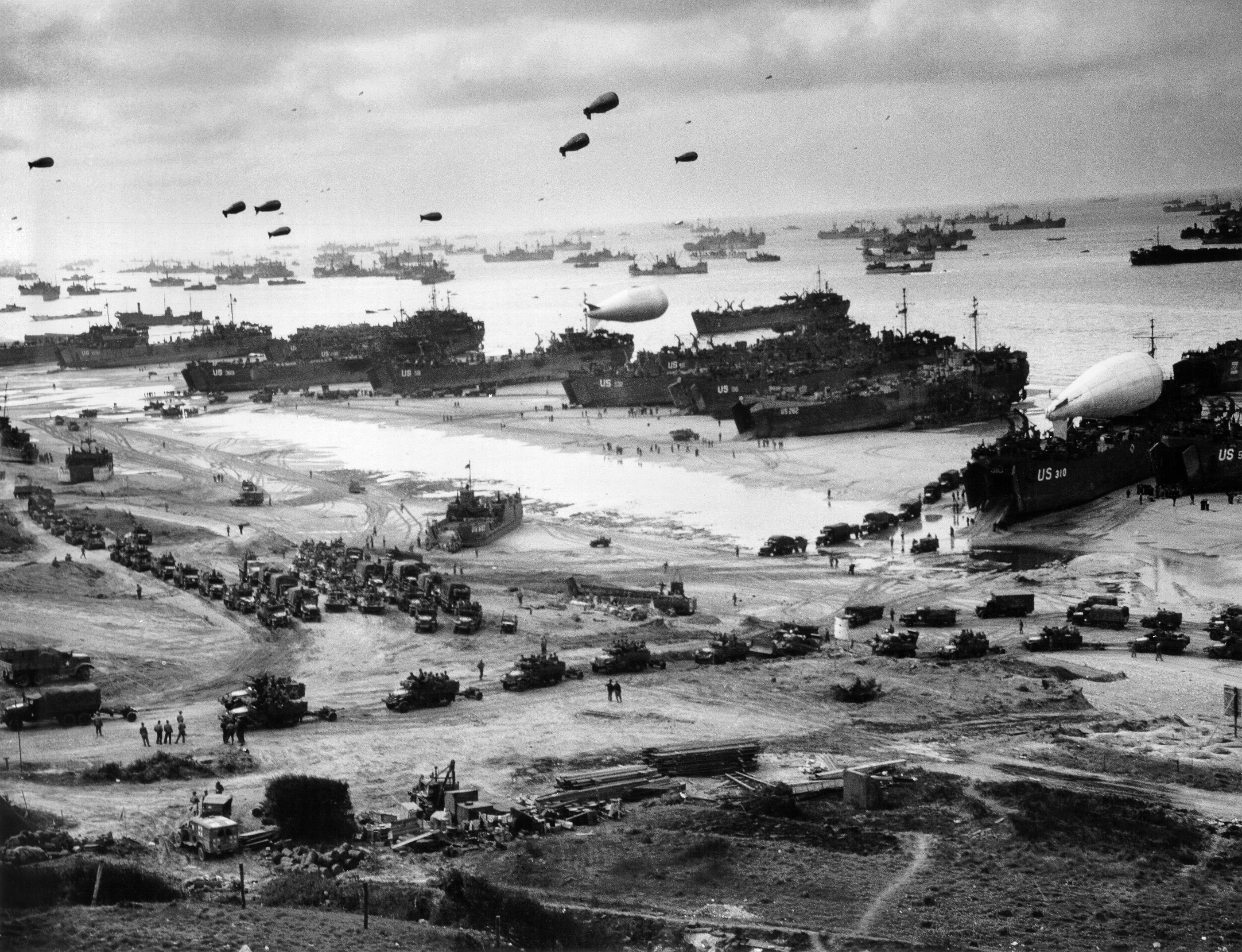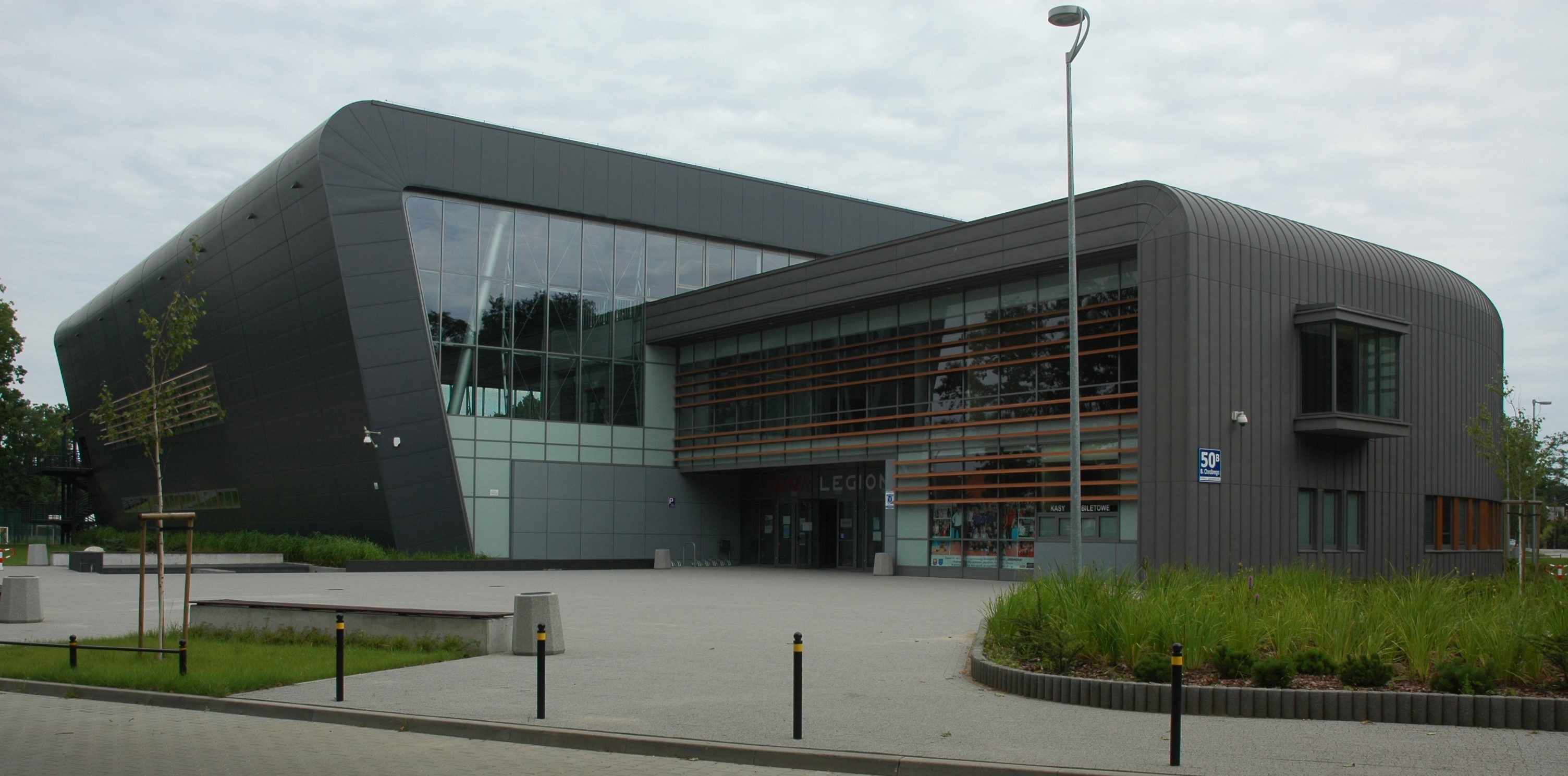|
Zbigniew Burzyński
Zbigniew Jan Władysław Antoni Burzyński (31 March 1902 in Zhovkva, pl, Żółkiew near Lwów – 30 December 1971 in Warsaw), was a Polish balloonist and constructor of balloons, pioneer of Polish balloons, who twice won the Gordon Bennett Cup in ballooning, also beat the world record. Biography Zbigniew Burzyński was the son of Helena Jaźwiecka and Władysław Burzyński, a forestry engineer. Raised in a middle-class family, he attended high schools in Lwów, Vienna and Kraków, where he joined the Cadet Corps and in 1919 graduated. Then, he entered the Artillery School in Poznań, after this school, briefly serving in the 2nd Mountain Artillery Regiment in Nowy Targ. On 1 May 1921 Burzyński was sent to a course of aeronautic observers at the Officers' Aeronautic School in Toruń. He completed it with honors and remained there as a lecturer, where he was promoted to Second Lieutenant. He translated from French the handbook of the first Polish zeppelin and participated i ... [...More Info...] [...Related Items...] OR: [Wikipedia] [Google] [Baidu] |
Zhovkva
Zhovkva ( uk, Жовква ; pl, Żółkiew; yi, זאָלקוואַ, translit=Zolkva; russian: Жо́лква, 1951–1992: ''Nesterov'') is a city in Lviv Raion, Lviv Oblast (region) of western Ukraine. Zhovkva hosts the administration of Zhovkva urban hromada, one of the hromadas of Ukraine. Its population is approximately . History A village named ''Winniki'' was mentioned at the site in 1368 and was part of the Kingdom of Poland under the Piast dynasty. The town was founded in 1597 as a private fortified town and named ''Żółkiew'' after its founder, one of the most accomplished military commanders in Polish history, hetman Stanisław Żółkiewski. Like Zamość, which was founded by Żółkiewski's mentor Jan Zamoyski, Żółkiew was built on an ideal Renaissance city plan. Due to its strategic location at the intersection of important trade routes, the town prospered.Ruth Ellen Gruber.For a fortress town, a second renaissance. January 12, 2009. The New York Times. I ... [...More Info...] [...Related Items...] OR: [Wikipedia] [Google] [Baidu] |
Nowy Targ
Nowy Targ (Officially: ''Royal Free city of Nowy Targ'', Yiddish: ''Naymark'', Goral Dialect: ''Miasto'') is a town in southern Poland, in the Lesser Poland Voivodeship. It is located in the Orava-Nowy Targ Basin at the foot of the Gorce Mountains, at the confluence of the Czarny Dunajec and the Biały Dunajec. It is the seat of the Nowy Targ County and the rural Gmina Nowy Targ, as well as the Tatra Euroregion. With 33,293 inhabitants, Nowy Targ is the largest town and the historic capital of Podhale, as well as its main commercial, communication and industrial center. The town has the Podhale State Vocational University and the highest located airport in Poland. Established before 1233, Nowy Targ received city rights on June 22, 1346 from King Casimir the Great. The historic architectural and urban complex of the town with a medieval market square has been preserved to this day. Toponymy In 1233, a settlement called in pl, Stare Cło, lit=Old Toll ( la, Antiquum T ... [...More Info...] [...Related Items...] OR: [Wikipedia] [Google] [Baidu] |
Tishkino
Tishkino (russian: Тишкино) is a rural locality (a village) in Zabolotskoye Rural Settlement, Permsky District, Perm Krai, Russia. The population was 17 as of 2010. There are 2 streets. Geography Tishkino is located 38 km southwest of Perm Perm or PERM may refer to: Places *Perm, Russia, a city in Russia ** Permsky District, the district **Perm Krai, a federal subject of Russia since 2005 **Perm Oblast, a former federal subject of Russia 1938–2005 **Perm Governorate, an administra ... (the district's administrative centre) by road. Aleksiki is the nearest rural locality. References Rural localities in Permsky District {{Permsky-geo-stub ... [...More Info...] [...Related Items...] OR: [Wikipedia] [Google] [Baidu] |
Chicago
(''City in a Garden''); I Will , image_map = , map_caption = Interactive Map of Chicago , coordinates = , coordinates_footnotes = , subdivision_type = Country , subdivision_name = United States , subdivision_type1 = State , subdivision_type2 = Counties , subdivision_name1 = Illinois , subdivision_name2 = Cook and DuPage , established_title = Settled , established_date = , established_title2 = Incorporated (city) , established_date2 = , founder = Jean Baptiste Point du Sable , government_type = Mayor–council , governing_body = Chicago City Council , leader_title = Mayor , leader_name = Lori Lightfoot ( D) , leader_title1 = City Clerk , leader_name1 = Anna Valencia ( D) , unit_pref = Imperial , area_footnotes = , area_tot ... [...More Info...] [...Related Items...] OR: [Wikipedia] [Google] [Baidu] |
Bielany
Bielany () is a district in Warsaw located in the north-western part of the city. Initially a part of Żoliborz, Bielany has been an independent district since 1994. Bielany borders Żoliborz to the south-east, and Bemowo to the south-west. Its north-eastern border is the Vistula River, and the northern-western border is also the limits of the city of Warsaw. The name 'Bielany', which in Polish is plural, derives from the white habits of the Camaldolese monks who have an ancient priory there. It is also known for the Józef Piłsudski University of Physical Education in Warsaw, which was established 1929 when it was known as the Central Institute for Physical Education (C.I.W.F.), as well as the newly built Cardinal Stefan Wyszyński University. Neighbourhoods * Chomiczówka *Huta * Las Bielański * Marymont-Kaskada * Marymont-Ruda * Młociny * Piaski * Placówka * Radiowo * Stare Bielany * Słodowiec *Wawrzyszew * Wólka Węglowa * Wrzeciono International relations Twin to ... [...More Info...] [...Related Items...] OR: [Wikipedia] [Google] [Baidu] |
Basel
, french: link=no, Bâlois(e), it, Basilese , neighboring_municipalities= Allschwil (BL), Hégenheim (FR-68), Binningen (BL), Birsfelden (BL), Bottmingen (BL), Huningue (FR-68), Münchenstein (BL), Muttenz (BL), Reinach (BL), Riehen (BS), Saint-Louis (FR-68), Weil am Rhein (DE-BW) , twintowns = Shanghai, Miami Beach , website = www.bs.ch Basel ( , ), also known as Basle ( ),french: Bâle ; it, Basilea ; rm, label= Sutsilvan, Basileia; other rm, Basilea . is a city in northwestern Switzerland on the river Rhine. Basel is Switzerland's third-most-populous city (after Zürich and Geneva) with about 175,000 inhabitants. The official language of Basel is (the Swiss variety of Standard) German, but the main spoken language is the local Basel German dialect. Basel is commonly considered to be the cultural capital of Switzerland and the city is famous for its many museums, including the Kunstmuseum, which is the first collection of art accessibl ... [...More Info...] [...Related Items...] OR: [Wikipedia] [Google] [Baidu] |
Franciszek Hynek
Franciszek () is a masculine given name of Polish origin (female form Franciszka). It is a cognate of Francis, Francisco, François, and Franz. People with the name include: *Edward Pfeiffer (Franciszek Edward Pfeiffer) (1895–1964), Polish general officer; recipient of the ''Order of Virtuti Militari'' *Franciszek Alter (1889–1945), Polish general officer during WWII *Franciszek and Magdalena Banasiewicz (fl. mid-20th century), Polish couple who hid and rescued 15 Jews during the Holocaust * Franciszek Antoni Kwilecki (1725–1794), Polish nobleman, statesman, and ambassador * Franciszek Armiński (1789–1848), Polish astronomer *Franciszek Bieliński (1683–1766), Polish politician and statesman *Franciszek Blachnicki (1921–1987), Polish man who started The Light-Life Movement (Światło-Zycie) as a Catholic association *Franciszek Błażej (1907–1951), Polish military officer and anticommunist resistance fighter *Franciszek Bohomolec (1720–1784), Polish dramatist, l ... [...More Info...] [...Related Items...] OR: [Wikipedia] [Google] [Baidu] |
Zbigniew Burzyński Kpt
Zbigniew () is a Polish masculine given name, originally Zbygniew . This West Slavic name is derived from the Polish elements ''Zby-'' (from ''zbyć, zbyć się, or pozbyć się'', meaning "to dispel", "to get rid of") and ''gniew'', meaning "anger". Its diminutive forms include Zbyszek and Zbyś. The Czech form of this name is Zbyněk (derived from Zbyhněv). Individuals with this name may celebrate their name day on February 17, March 17, April 1, June 16 or October 10. English diminutive of this name is Zibi, Zbiggy or Zbig. Notable people * Zbigniew of Brzezia (c. 1360 – c. 1425), Polish knight and nobleman of Clan Zadora * Zbigniew of Poland, high duke of Poland from 1102–1106 A * Zbigniew Andruszkiewicz (born 1959), Polish rower B * Zbigniew Babiński (1896–1940), Polish military and sports aviator * Zbigniew Bargielski (born 1937), Polish composer * Zbigniew Baranowski (born 1991), Polish wrestler * Zbigniew Bartman (born 1987), Polish volleyball playe ... [...More Info...] [...Related Items...] OR: [Wikipedia] [Google] [Baidu] |
Barrage Balloon
A barrage balloon is a large uncrewed tethered balloon used to defend ground targets against aircraft attack, by raising aloft steel cables which pose a severe collision risk to aircraft, making the attacker's approach more difficult. Early barrage balloons were often spherical. The design of the kite balloon, having a shape and cable bridling which stabilises the balloon and reduces drag, meant that it could be operated at higher wind speeds than a spherical balloon. Some examples carried small explosive charges that would be pulled up against the aircraft to ensure its destruction. Barrage balloons are not practical against very high-altitude flying aircraft, due to the weight of the long cable required. First World War France, Germany, Italy and the United Kingdom used barrage balloons in the First World War. While the French and German forces had developed kite balloons, early British barrages balloons were spherical. Sometimes, especially around London, several balloons wer ... [...More Info...] [...Related Items...] OR: [Wikipedia] [Google] [Baidu] |
Legionowo
Legionowo is a city in Masovia ( pl, Mazowsze), east-central Poland. Location Legionowo is located to the north-east of the center of Warsaw and only to the south of Zegrze Reservoir ( or ), near the Warsaw-Gdańsk railroad and Warsaw-Suwałki road. Situated in the Masovian Voivodeship (, created in 1999 as a result of Local Government Reorganization Act), previously in Warsaw Voivodeship ( or , 1975–1998) and old Masovian Voivodeship (before 1975). Currently this is the capital of Legionowo County (, which is one of 38 land counties () in Masovian Voivodeship. Adjoining counties (from north, clockwise): Pułtusk County, Wyszków County, Wołomin County, Warsaw, Warsaw West County, Nowy Dwór County, Masovian Voivodeship, Nowy Dwór County. Education There are four high schools in the town of which three are public and one is private faith-based. Higher education is only currently represented by a police training academy. Between 2001 and 2006 a private ''Economic- ... [...More Info...] [...Related Items...] OR: [Wikipedia] [Google] [Baidu] |
Chalais-Meudon
Chalais-Meudon is an aeronautical research and development centre in Meudon, to the south-west of Paris. It was originally founded in 1793 in the nearby Château de Meudon and has played an important role in the development of French aviation. Balloons The story of aviation at Chalais-Meudon starts in October 1793 when the French Public Safety Committee ordered the construction of an observation balloon capable of carrying two observers. The old royal grounds at Meudon were allocated for this work, with the Château de Meudon chosen as the centre, with Nicolas-Jacques Conté as director. Two French Balloon Corps balloon companies had already been created, and the new organisation's role was to build balloons and train their pilots and operators. The first balloon, the ''Entreprenant'', was built within four months, and on 31 October 1794, the National School of Ballooning was created, with Conté as its director. Many other balloons were then built in a short period, including, ... [...More Info...] [...Related Items...] OR: [Wikipedia] [Google] [Baidu] |





